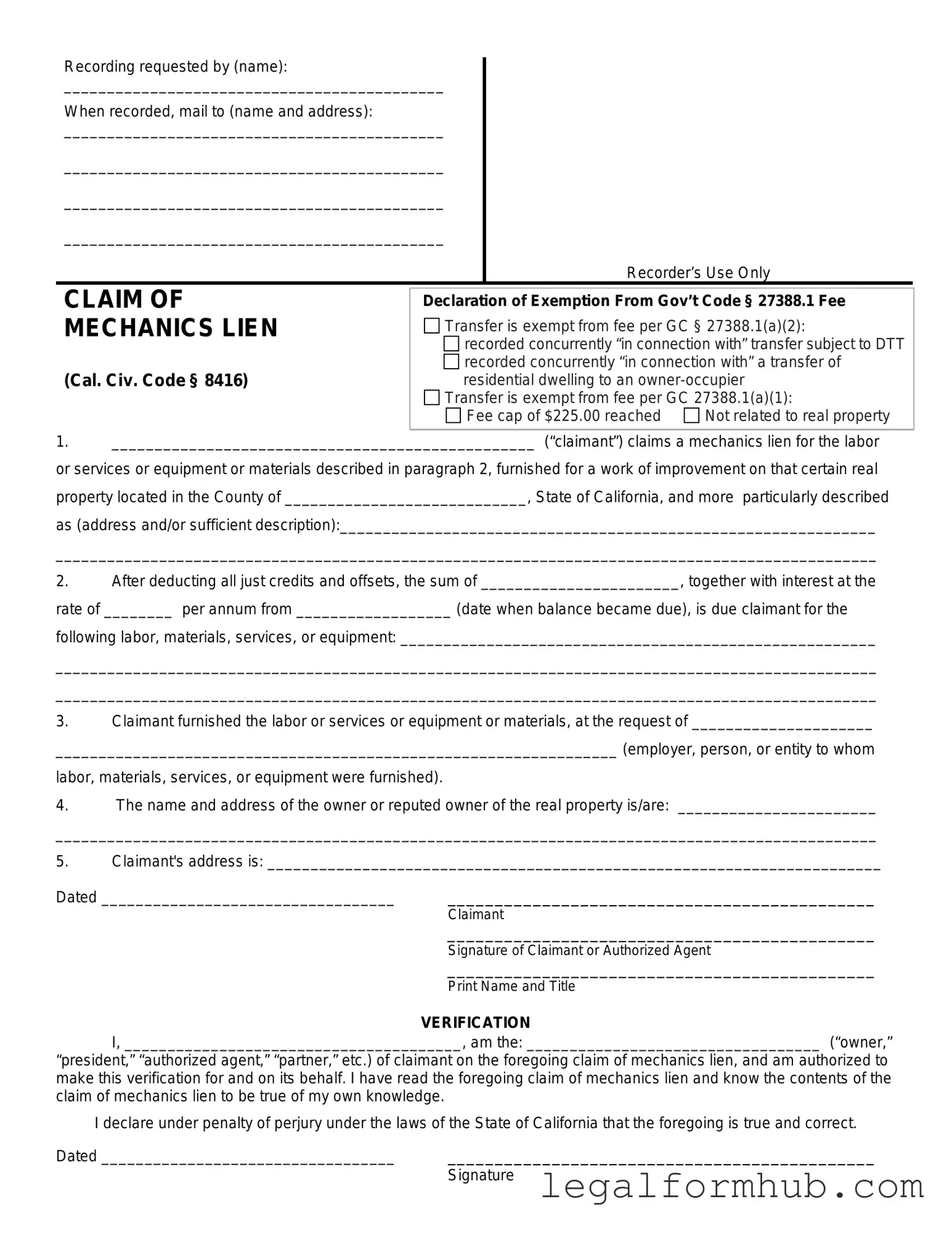The Notice of Completion is a document that serves a similar purpose to the Mechanics Lien form in California. When a construction project is finished, the property owner can file a Notice of Completion to officially declare the completion of work. This notice can trigger the start of the deadline for contractors and subcontractors to file a mechanics lien. Both documents aim to protect the rights of those who have contributed labor or materials to a project, ensuring they have a means to secure payment.
The Stop Notice is another document that shares similarities with the Mechanics Lien form. A Stop Notice can be served on a property owner or a construction lender to inform them that a contractor or subcontractor has not been paid for work performed. Like a mechanics lien, a Stop Notice is a tool to secure payment, but it does not require the filing of a lien against the property. Instead, it places a hold on the funds that are owed for the project, ensuring that those who contributed to the work can receive their due compensation.
The Preliminary Notice is an important document in the construction process that is akin to the Mechanics Lien form. This notice is typically sent at the beginning of a project to inform the property owner and general contractor of the parties involved in the work. It serves as a warning that if payment is not made, a mechanics lien may be filed later. Both the Preliminary Notice and the Mechanics Lien are proactive measures designed to protect the rights of those who provide labor and materials on a construction project.
The Claim of Lien is a document that directly relates to the Mechanics Lien. It is the formal instrument used to assert a lien against a property for unpaid work or materials. While the Mechanics Lien form itself serves as a notice of intent to file a lien, the Claim of Lien is the actual filing that can be recorded with the county. Both documents are critical in the lien process, allowing contractors and suppliers to secure their right to payment through legal means.
For those engaged in California's motorcycle transactions, it's vital to have a properly executed bill of sale, ensuring all parties are protected in the transfer of ownership. This document is not only important for legal compliance but also serves as proof of the transaction details, safeguarding the interests of both buyer and seller. If you need assistance in completing the necessary paperwork, you can access the required resources at Fill PDF Forms.
The Release of Lien is a document that complements the Mechanics Lien. Once a debt is satisfied, the party who filed the mechanics lien must execute a Release of Lien to clear the property title. This document confirms that the obligation has been fulfilled and that the lien is no longer in effect. Both the Release of Lien and the Mechanics Lien are essential in ensuring that property owners can regain clear title to their property after debts have been settled.
